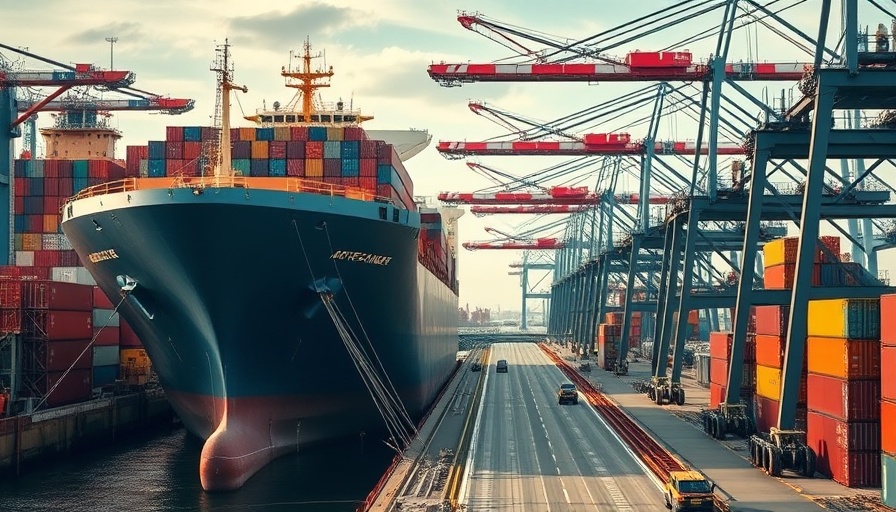
London Gateway's Ambitious Expansion: What It Means for the Future
The £1 billion expansion of the London Gateway port, planned to commence in May, marks a significant chapter in the evolution of UK trade infrastructure. With the construction period expected to last four years, this project led by global logistics leader DP World aims to enhance the port's capacity by adding two all-electric berths and a second rail terminal as part of the ambitious Thames Freeport initiative. Such upgrades are not merely concrete additions; they symbolize the UK’s commitment to improving trade connections globally.
The Economic Impact: Jobs and Growth on the Horizon
The expansion is projected to create over 1,000 construction jobs, thereby bolstering local employment opportunities during a critical period for economic recovery. DP World has previously injected over £5 billion into UK operations, supporting approximately 5,500 jobs across various sites. As Sultan Ahmed bin Sulayem, CEO of DP World, highlighted, this infusion of jobs and capacity will not only enable businesses to thrive in the UK but is also a proactive step toward enhancing the resilience of the national supply chain.
Connecting Global Trade: The Role of Ports in the Economy
With global trade intricately linked to port facilities, the London Gateway expansion will facilitate smoother logistic flows between the UK and international markets, which have become essential since the impact of Brexit and the COVID-19 pandemic on trade dynamics. Ports such as London Gateway act as crucial nodes in the global supply chain. Enhancements in these facilities are vital for maintaining competitiveness and ensuring the UK remains an attractive destination for trade.
Technological Advancements in Port Operations
The commitment to operationalize all-electric berths as part of the expansion reflects a growing trend towards sustainability in port operations. Moving towards green technologies not only addresses environmental concerns but also aligns with global goals for reducing emissions, thus leading to a more sustainable future for the industry.
Challenges and Opportunities Ahead
While the expansion promises numerous benefits, it also brings challenges as contractors brace for increased demand and potential delays in supply chains. The construction sector has faced disruptions recently, with more than half of contractors expressing concern over supply chain vulnerabilities in essential materials. Addressing these challenges head-on will be critical to the project's success.
Looking Forward: The Long-Term Vision
As this expansion unfolds, stakeholders must keep their eyes on the future, emphasizing innovation and adaptability to ensure the project's smooth progress. With the backing of significant investment and expertise, the London Gateway port is primed to evolve into a landmark in the UK’s transport and logistics landscape.
In conclusion, the London Gateway port expansion stands as an emblematic investment in the country’s economic future, promising not only immediate job creation and infrastructure improvements but also long-term advantages that will foster international connectivity and resilience in supply chains. Stakeholders in the construction and logistics industries should closely monitor this project as it progresses, embracing the opportunities it presents for collaboration and growth.
 Add Row
Add Row  Add
Add 




Write A Comment